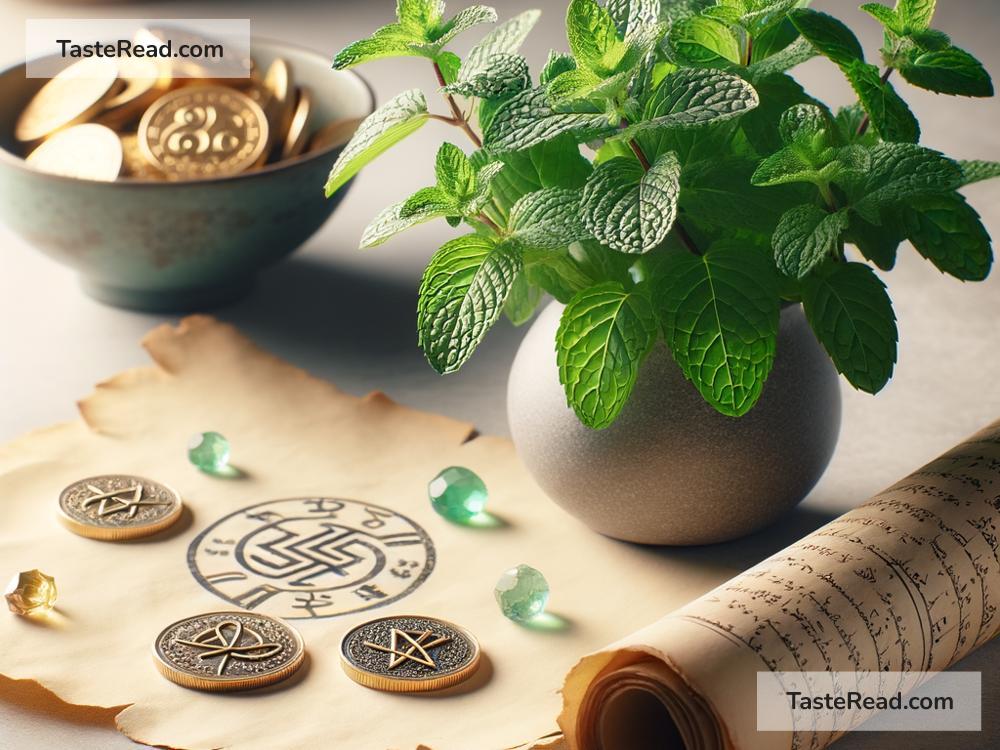The Mythical Connection Between Mint and Prosperity
Mint is a widely loved herb known for its fresh, invigorating scent and countless uses, from enhancing our favorite dishes to soothing upset stomachs. You might recognize it as the key ingredient in mojitos or mint tea, but did you know that mint has a fascinating connection to myths and beliefs about prosperity? For centuries, various cultures have associated mint with wealth, abundance, and good fortune. In this blog, we’ll explore the historical, mythical, and symbolic ties between mint and prosperity and why this herb remains a powerful symbol even today.
What Is Mint?
Before diving into the mystical connection between mint and wealth, let’s take a moment to understand what mint really is. Mint is a hardy herb that grows easily in gardens, pots, and even wild areas. It belongs to the plant family Lamiaceae and comes in different varieties, such as spearmint, peppermint, and chocolate mint. Aside from its culinary and medicinal uses, mint has a symbolic and spiritual significance that has captured people’s imaginations for centuries.
Mint in Ancient Mythology
The connection between mint and prosperity has roots in ancient mythology. According to Greek mythology, mint is tied to the story of a nymph named Menthe (or Minthe). Menthe was said to have caught the attention of Hades, the god of the underworld, which angered Hades’ wife, Persephone. In a fit of jealousy, Persephone transformed Menthe into a plant—the mint we recognize and celebrate today. While the myth itself doesn’t directly mention prosperity, mint became associated with rejuvenation, freshness, and enduring grace, qualities that later contributed to its symbolic link with abundance.
In Roman culture, mint was considered an herb of hospitality and wealth. Romans would use mint to freshen their homes and adorn tables because they believed it brought positive energy and good fortune to those who enjoyed its presence. They even crafted wreaths of mint to wear during celebrations, symbolizing vitality and prosperity.
Mint as a Symbol of Wealth in Folklore
Throughout history, mint evolved into a widespread symbol of wealth and prosperity across different cultures. This connection largely stems from its ability to grow rapidly and abundantly. Mint is one of the easiest plants to cultivate—give it some sun and water, and it thrives. For many people, its vigorous growth symbolized abundance and unlimited resources, leading to its association with financial prosperity.
In folklore, mint was often thought to attract money, luck, and business success. People would carry mint leaves or mint oil in their pockets, place it near cash registers, or keep it in their wallets as a charm to bring financial growth. Mint was sometimes planted near homes or businesses to encourage a steady flow of income and prosperity for the household or establishment. This belief persists even today in some traditions.
Mint in Feng Shui and Spiritual Practices
In the practice of Feng Shui, mint is considered a plant that attracts positive energy, wealth, and abundance, making it popular for placement in homes and offices. Its vibrant green color represents renewal, growth, and prosperity. Mint is thought to have the ability to ward off negative energy and keep spaces feeling fresh, both physically and spiritually.
Mint has also found its place in spiritual rituals and prosperity spells. For example, many use mint in money-attraction spells or mix it with other herbs like cinnamon and basil, which are also believed to bring financial success. Some people burn mint incense or diffuse mint essential oil to purify their surroundings and create an atmosphere of abundance.
The Role of Mint in Prosperity Through Health
One practical way mint contributes to prosperity is through its impact on health and well-being. Good health is often considered the foundation of personal success. Mint’s medicinal qualities—such as aiding digestion, easing headaches, and reducing stress—help people feel balanced and energized, enabling them to focus on their goals and ambitions. When you think about it, staying healthy allows us to work harder, achieve more, and make sound decisions, all of which contribute to prosperity.
Mint’s Influence Today
Even in modern times, mint continues to represent prosperity and abundance in subtle ways. Think about its role in commerce and branding: mint is often used to symbolize freshness and value in products ranging from toothpaste to skincare items. Its association with clean, refreshing energy makes it the perfect pick for items marketed as giving consumers a “boost.” Furthermore, the phrase “mint condition,” which signifies something pristine and valuable, reinforces the connection between mint and worth.
On a broader scale, mint’s presence in food, drinks, and aromatherapy brings people small moments of joy and well-being, reminding us that prosperity is not just about money—it’s also about living a fulfilling, balanced life.
Final Thoughts
Whether you look at mint through the lens of mythology, folklore, or spiritual practices, its connection to prosperity is undeniable. From its ancient role in ceremonies to its modern-day use in Feng Shui and well-being rituals, mint has always symbolized abundance, vitality, and good fortune. Easy to grow and endlessly useful, it’s no wonder mint is cherished as a plant of prosperity.
So, the next time you sip on a minty drink or plant mint in your garden, remember: you’re inviting a little bit of magic and abundance into your life! Who knows? This simple, aromatic herb may just be your gateway to greater prosperity, both physically and spiritually.


